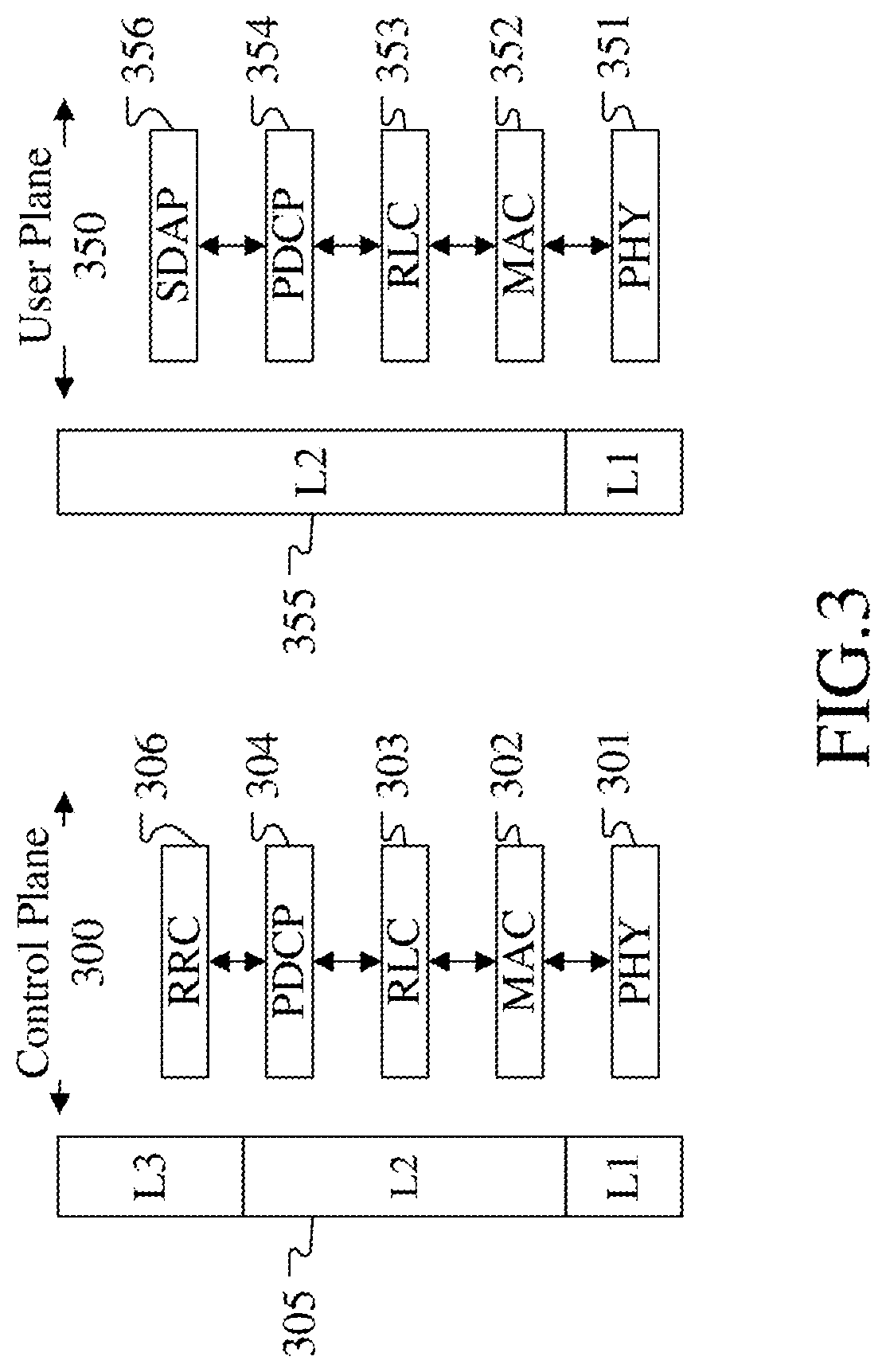Method and device for dynamic scheduling in ue and base station
a dynamic scheduling and transmission method technology, applied in the direction of wireless communication, signalling characterisation, error prevention/detection by transmission repeat, etc., can solve the problems of waste of control signaling resources, reduce the overhead of control signaling, improve transmission efficiency, and reduce complexity
- Summary
- Abstract
- Description
- Claims
- Application Information
AI Technical Summary
Benefits of technology
Problems solved by technology
Method used
Image
Examples
embodiment 1
[0169]Embodiment 1 illustrates an example of a flowchart of processing of a UE, as shown in FIG. 1. In 100 shown in FIG. 1, each box represents one step. In Embodiment 1, the UE in the disclosure detects a first signaling in S101.
[0170]In Embodiment 1, the first signaling is a physical layer signaling; the first signaling includes a first bit block, and a number of bits in the first bit block is related to a transmission mode of the first signaling; the transmission mode of the first signaling is one of multiple candidate modes; the multiple candidate modes include at least a first candidate mode and a second candidate mode; for the first candidate mode, the first bit block is transmitted multiple times; and for the second candidate mode, the first bit block is transmitted once.
embodiment 2
[0171]Embodiment 2 illustrates an example of a diagram of a network architecture, as shown in FIG. 2.
[0172]FIG. 2 is a diagram illustrating a network architecture 200 of NR 5G, LTE and Long-Term Evolution Advanced (LTE-A) systems. The NR 5G or LTE network architecture 200 may be called an Evolved Packet System (EPS) 200 or some other appropriate terms. The EPS 200 may include one or more UEs 201, a Next Generation-Radio Access Network (NG-RAN) 202, an Evolved Packet Core / 5G-Core Network (EPC / 5G-CN) 210, a Home Subscriber Server (HSS) 220 and an Internet service 230. The EPS may be interconnected with other access networks. For simple description, the entities / interfaces are not shown. As shown in FIG. 2, the EPS provides packet switching services. Those skilled in the art are easy to understand that various concepts presented throughout the disclosure can be extended to networks providing circuit switching services or other cellular networks. The NG-RAN includes an NR node B (gNB) 2...
embodiment 3
[0175]Embodiment 3 illustrates a diagram of an embodiment a radio protocol architecture of a user plane and a control plane according to the disclosure, as shown in FIG. 3. FIG. 3 is a diagram illustrating an embodiment of a radio protocol architecture of a user plane 350 and a control plane 300. In FIG. 3, the radio protocol architecture of a control plane 300 between a first communication node (UE, gNB or RSU in V2X) and a second communication node (gNB, UE or RSU in V2X) or between two UEs is illustrated by three layers, which are a Layer 1, a Layer 2 and a Layer 3 respectively. The Layer 1 (L1 layer) 301 is the lowest layer and implements various PHY (physical layer) signal processing functions. The L1 layer will be referred to herein as the PHY 301. The Layer 2 (L2 layer) 305 is above the PHY 301, and is responsible for the link between the first communication node and the second communication node and between two UEs over the PHY 301. The L2 layer 305 includes a Medium Access ...
PUM
 Login to View More
Login to View More Abstract
Description
Claims
Application Information
 Login to View More
Login to View More - R&D
- Intellectual Property
- Life Sciences
- Materials
- Tech Scout
- Unparalleled Data Quality
- Higher Quality Content
- 60% Fewer Hallucinations
Browse by: Latest US Patents, China's latest patents, Technical Efficacy Thesaurus, Application Domain, Technology Topic, Popular Technical Reports.
© 2025 PatSnap. All rights reserved.Legal|Privacy policy|Modern Slavery Act Transparency Statement|Sitemap|About US| Contact US: help@patsnap.com



